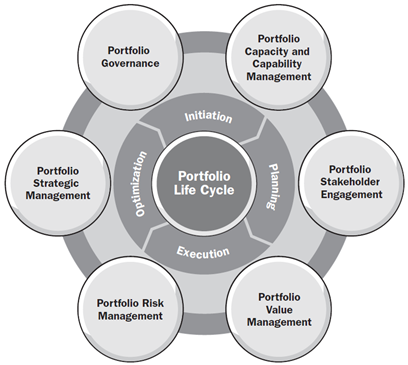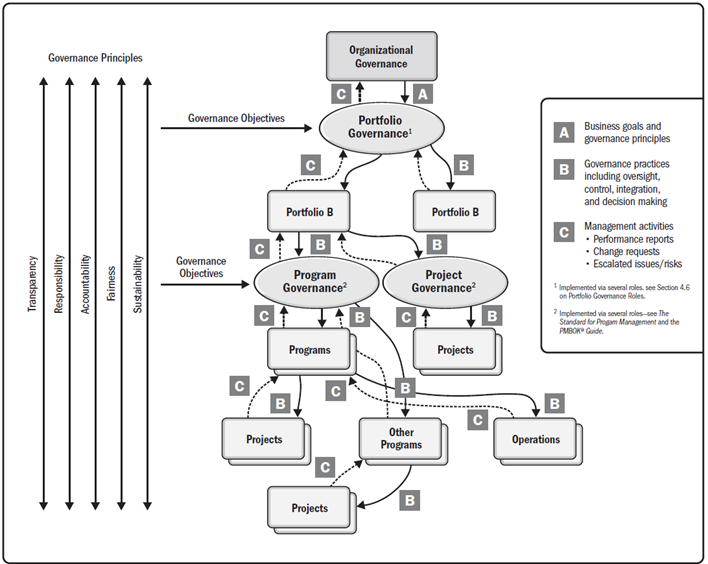Like it or not. We are living in a business world where professionals are always on the lookout for ‘best practices’ – be it products, services, or Project Portfolio Management Software.
There is no harm in seeking and incorporating best practices. Professionals must realize that best practices are a byproduct of multiple factors – employees’ competence, business processes, and organizational culture.
But, don’t let the best practices of other organizations take away your unique differentiator or USP (unique selling proposition).
Living in a project economy, adoption of the principles and processes associated with Project Portfolio Management is no longer a choice, unless, of course, you want to manage your growth and profitability in a chaotic way!
Further, any discussion on project portfolio management is incomplete without Project Portfolio Management Software or PPM Software!
A refresh of the key dimensions of project portfolio management is essential before delving into the relevant best practices.

PROJECT PORTFOLIO MANAGEMENT PERFORMANCE BEST PRACTICE # 1: DON’T MISS THE OPTIMIZATION PIECE
Portfolio managers are under pressure to deliver business value very quickly. It is observed that such pressure pushes portfolio managers to execution – without a relevant focus on portfolio optimization. While the organization benefits in the short term, it may suffer in the long run.
Ensure that your portfolio management covers the complete cycle: Initiation – Planning – Execution – Optimization.
PROJECT PORTFOLIO MANAGEMENT PERFORMANCE BEST PRACTICE # 2: GOVERNANCE. GOVERNANCE. GOVERNANCE.
The success of project portfolio management is directly linked to a swift and accurate understanding of the external business factors including competitor actions, new technology & engineering, governmental regulations, and changes in customer preferences and lifestyle.
While portfolio management in most organizations starts on a great note, the rigor of sustained governance loses steam for various reasons. The senior leaders wake up suddenly when ‘unexpected’ developments shake the edifice of the organization.
Don’t underestimate the power of sustained governance. Project portfolio management software with advanced capabilities of analytics, business rules-driven alerts & notifications, and real-time collaboration make the process of governance seem like a breeze.

Source: Standard for Portfolio Management – Fourth Edition, PMI (USA)
PROJECT PORTFOLIO MANAGEMENT PERFORMANCE BEST PRACTICE # 3: DIGITALIZATION IS THE KEY.
Project portfolio management involves managing programs and projects to optimize business value and benefits realization.
While business leaders want to grow profitably, most of them are still stuck with the old school of thought – reliance on spreadsheets, documents, emails, and meetings.
With businesses and employees going global, decision-makers must use technology as a key enabler.
The top management must push for digitalization through best-in-class online project portfolio management software that can configure business processes, decision workflows, templates, etc. that eliminate the need for ‘non-value-adding’ manual work.
PROJECT PORTFOLIO MANAGEMENT PERFORMANCE BEST PRACTICE # 4: AGILE CAPACITY MANAGEMENT
Resources are the building blocks of effective project portfolio management. Resources include people, materials, equipment, etc. By nature, project portfolio management thrives on change – driven by both external and internal factors.
In such a dynamically changing environment, project portfolio managers must have real-time access to resource capacity that enables them to make resourcing decisions at short notice.
Leaders must build an agile capacity management culture across the organization – today’s online project portfolio management software reduces much of the burden in this process.
PROJECT PORTFOLIO MANAGEMENT PERFORMANCE BEST PRACTICE # 5: FIT-TO-PURPOSE PPM SOFTWARE
Many a time, decisions regarding online project portfolio management software are taken considering an ‘ideal’ scenario – one where every project and program is being managed in one way.
Strangely, a commercially-off-the-shelf (COTS) PPM Software is expected to be the alchemy for the entire organization. The reality is quite the opposite.
Projects and programs vary in size, complexity, strategic nature, processes, workflows, etc.
Decision-makers must meticulously evaluate PPM Software that is ‘fit-to-purpose’ – based on the needs of projects and programs.
PROJECT PORTFOLIO MANAGEMENT PERFORMANCE BEST PRACTICE # 6: NIMBLE RISK MANAGEMENT
The success of project portfolio management hinges to a large extent on the assessment of the external factors and their impact on portfolio goals and objectives.
Negative risks or threats may deliver a significant blow to meeting the expected financial value. At the same time, positive risks or opportunities may offer new avenues for enhanced financial value.
Most project portfolio managers are handicapped without appropriate and up-to-date insights and thereby struggle with decisions.
Systems must be in place to feed the project portfolio managers with relevant insights and analytics along with push notifications.
PROJECT PORTFOLIO MANAGEMENT PERFORMANCE BEST PRACTICE # 7: KEEP STAKEHOLDERS ENGAGED
At an organizational level, project portfolio management deals with senior and executive stakeholders whose focus is on entering new markets, launching new products & services, profitable growth, staying ahead of the competition, managing uncertainty, and so on.
The level of engagement must be of a higher order that addresses business dimensions in a proactive manner.
Unfortunately, most project portfolio managers are not able to keep the executive management continuously engaged – either due to a lack of access or weak collaboration mechanisms.
Organizations must put in place a collaboration platform that enables a quick two-way connection between project portfolio managers and executive management.
SUMMARY OF BEST PRACTICES
- Don’t miss the optimization piece.
- Governance. Governance. Governance.
- Digitalization is the key.
- Agile capacity management.
- Fit-to-Purpose PPM software.
- Nimble risk management.
- Keep stakeholders continually engaged.





